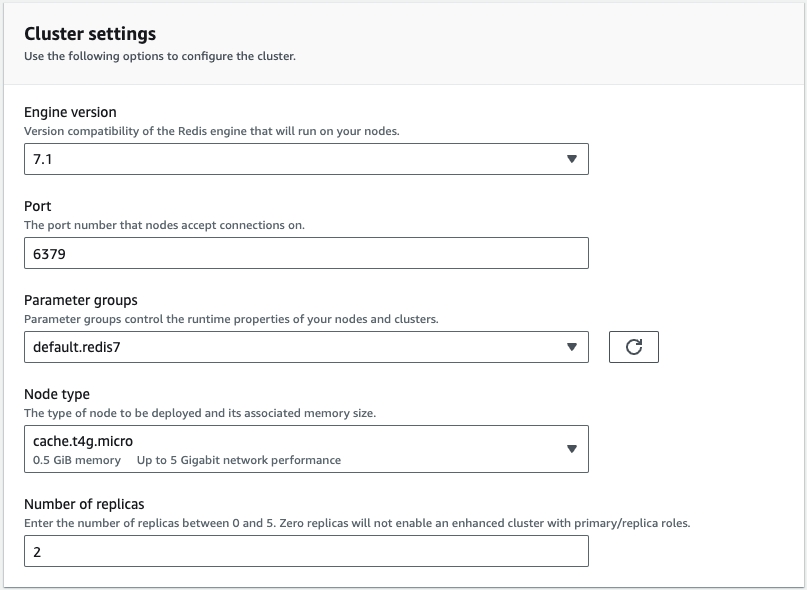Cache - Amazon ElastiCache
Here, you can find a tutorial on how to setup a Redis Elasticache to work with DecisionRules.
Creating a Redis based Amazon ElastiCache
AWS ElastiCache Serverless is not supported. Please use an instance-based ElastiCache configuration instead.
Open ElastiCache Dashboard In the AWS Console, select ElastiCache. Hit Get started and select Redis. Click Design your own cache and select the Cluster cache method. Cluster mode Disabled.
Choose a name for your cluster and continue to Cluster settings. There, keep everything default apart from the Node type where I recommend you choose cluster.t4g.micro.

Next in Connectivity choose Create a new subnet group, give it a name and choose your VPC.

Next up the Advanced settings.
Assign the cache your preffered security groups, for the purposes of this tutorial I only use the default one.
I choose to disable automatic backups as DecisionRules uses Redis only for caching and not as operational storage.
Keep the rest of the settings default and hit Next. Review the settings and Create.
Necessary settings and connection strings
Maxmemory policy
Navigate to ElastiCache / Configurations / Parameter groups. Click Create parameter group. Here assign the parameter group a name and for the Family setting choose redis7. Hit Create.
Go to the newly created parameter group and click Edit parameter values. Search for maxmemory-policy. For the value of this policy select either allkeys-lfu or allkeys-lru. Hit Save changes.

Connection string
To find your connection string navigate to your redis ElastiCache and there under Cluster details look for Primary endpoint.
The connection string will have the following format: redis://<primary_endpoint>
For ease-of-use below are the necessary settings in list form:
Engine: Redis
Engine version: 6 and newer
Port: 6379
Number of replicas: 2
Multi-AZ: Yes
Advanced Redis settings:
Subnet group: Same as DecisionRules server app
Availability zones placement: No preference
Security:
Security groups: Same as DecisionRules server app
Encryption at-rest: No
Encryption in-transit: No
Last updated